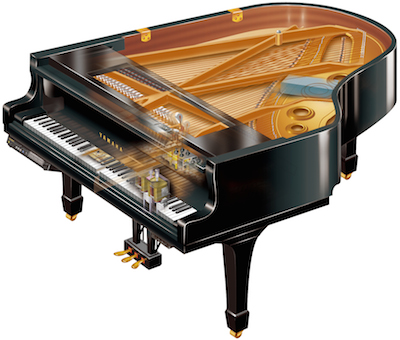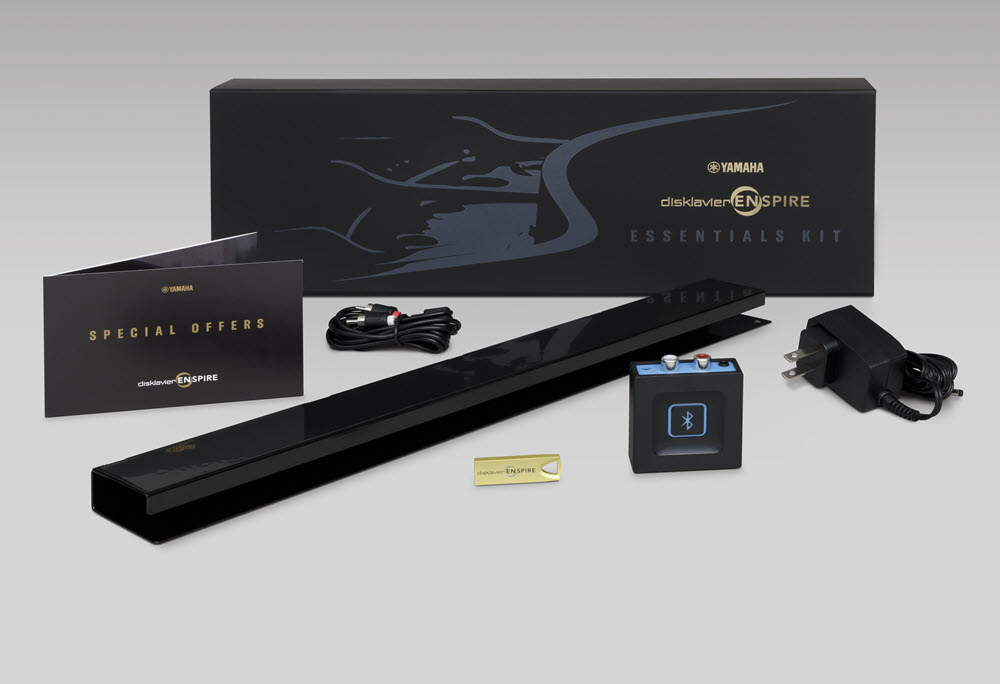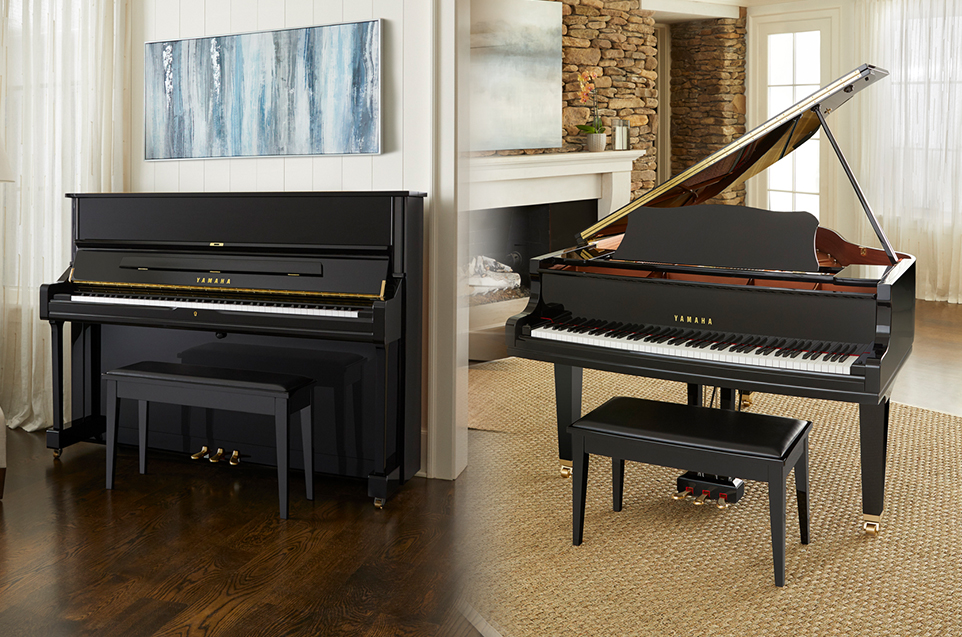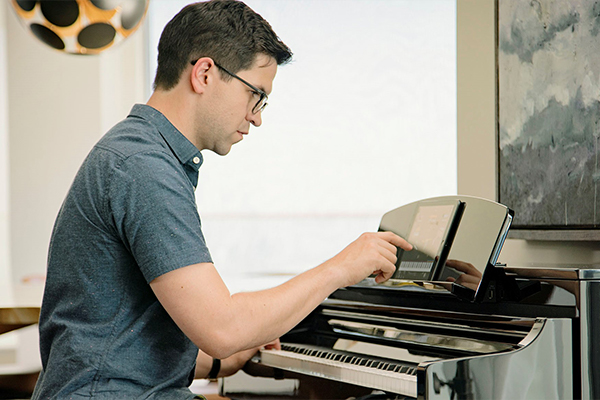How to Care for Your Yamaha Disklavier
A guide to maintaining your instrument.
A Yamaha Disklavier is an important investment that can provide you (and, if you’re an educator, your students) with years of reliable performance. Here’s a guide to ensuring that you’ll be enjoying its benefits for a long time to come.
Where to Locate Your Disklavier
You don’t always have a lot of choices when placing big instruments, particularly in institutional settings. However, following these guidelines will maximize the sound and stability of your Disklavier:
1. Put your Disklavier where it sounds best. Try to avoid being near reflective surfaces that will cause harsh echoes.

2. Provide sufficient ventilation. Disklaviers need ventilation, but don’t need to be placed directly in the path of blowing air. The best location for your Disklavier is in the center of a room or against a wall dividing two rooms. If possible, avoid placing it next to an exterior wall where outside weather conditions might cause tone quality and volume to suffer. If there is no other choice, at least make sure that the Disklavier has adequate space on all sides.
3. Avoid windows. Try not to place the Disklavier near a window. A Disklavier cabinet is made of wood and must be protected against direct sunlight, humidity and sudden changes in temperature. Windows that open to the outdoors offer the least protection. If you must place the Disklavier near such a window, put a heavy curtain over the window for protection.
4. Avoid heat sources. Keep the Disklavier away from sources of heat such as radiators or hot air registers. Excessive heat can damage the finish and internal parts, causing tone and balance to deteriorate, and may possibly dry and damage the soundboard.
Optimize Your Disklavier’s Environment
Yamaha pianos are renowned for their stability and durability. Through a process known as “seasoning for destination,” Disklaviers, like all Yamaha pianos, are carefully prepared to perform well in a wide variety of environments. However, because it is made of wood, felt, leather and metal, it must be treated correctly in order to extend the life of the instrument. Here are some tips for doing so:
1. Control the humidity. Generally speaking, a relative humidity of between 40 and 45 percent around the piano is ideal.
2. Protect against excessive moisture. Your local Yamaha Disklavier dealer can advise you how best to compensate for climatic conditions in your area. However, there are some general tips for proper care: On cloudy or rainy days, close all windows in the room where your Disklavier is located. Also, be sure to close the top board each time after playing. Finally, be especially careful about excessive moisture if you live in one of the following places:
– Along a seacoast or in a rainy or humid region
– In a valley, in a house facing hills, or in an area with poor drainage.
– In a concrete building less than one or two years old.
– In an area where air exhausts are directed into a room, or in a dark room facing north.
3. Beware of excessive dryness. Too much humidity is a problem, but excessive dryness is an even more serious one, especially where heating or cooling systems are used that can create artificially dry rooms. Used in naturally dry climates, the Disklavier has enough natural moisture to prevent excessive drying. However, if the air becomes too dry, the wooden and felt components will shrink. In extreme cases, the soundboard, joints and other laminated sections may even come apart, even though they have been glued together carefully. Slight distortion of the parts may cause noise, and the swelling and shrinking of the wood in the piano may make it difficult to keep your Disklavier in tune. To avoid excessive dryness, it’s best to keep a humidifier in the room where your Disklavier is located.
4. Avoid sudden temperature changes. When a cold room is warmed suddenly, moisture may condense on the Disklavier strings and other metal parts, causing them to rust. In addition, felt parts absorb moisture, affecting their function and resulting in unclear sound. Be especially careful about sudden temperature changes when moving your Disklavier into a room in a cold climate or into an airtight room in a concrete building.
Care Practices and Good Habits
As with any fine piano, the use of materials such as wood, felt and cloth in Disklavier construction means that many parts are quite delicate. If not properly cared for, they can be easily damaged. Here are some good practices to adopt:
1. Dust your Disklavier regularly. Particulates can affect the action and cause noise, so dust your Disklavier frequently with a feather duster or slightly damp soft cloth, then dry the finish with a soft cloth.
2. Keep the keyboard clean. Your Disklavier keyboard should be wiped periodically with a soft, dry cloth. Never use cleaners containing alcohol, as the keys will become cracked. If the keyboard is very dirty, wipe it with a cloth dipped in a solution of soap and water and wrung out well. The same cloth should not be used for cleaning the surface of the Disklavier, however. A good habit to cultivate is never to play the Disklavier with dirty hands. That way, the keyboard will stay clean for a long time.
3. Do not place objects on top of your Disklavier. We know how much pianists love coffee (and other beverages). Regardless, please keep them off the Disklavier! Even small amounts of liquid of any kind may rust the metal parts of the Disklavier and damage the hammers and action, not to mention the electronic components. In addition, the delicate and very precise fiber-optic sensors that make a Disklavier so accurate can be damaged by items that may drop in between keys or below the music desk. Avoid costly accidents and never place anything on the piano that could spill or drop between the moving parts.
4. Avoid contact with certain materials. Your Disklavier’s finish is very durable, but all wood finishes can be damaged from long-term contact with certain substances. These include plastic products, vinyl products, anything containing alcohol, and liquids such as cosmetics, insecticides, paint thinner, and petroleum-based products. Never use any kind of aerosol near your Disklavier. If such cleaning products must be used, spray directly into the cloth instead of in the air.
Note: Yamaha is unable to assume responsibility for damage resulting from abuse, harsh treatment, or extended exposure to adverse conditions.
Institutional Service Schedule

We strongly recommend that you adopt a schedule of regular service for your Disklavier, including regular tuning and adjustment. In institutional settings, it is advisable to put such maintenance on the school’s administrative calendar, since it may require work by someone other than the school’s usual technician. In addition, we recommend using a Disklavier-trained technician for all service. At least twice per year, your Disklavier should receive the following maintenance, in this order:
1. Perform any mechanical maintenance or adjustments. Voicing, regulation, or mechanical repairs should be done before any other electronic or acoustic maintenance.
Institutional technicians take note: Always mechanically adjust the damper and shift pedals as specified by Yamaha, then run pedal calibration. Also, make sure the key balance rail holes are free.
2. Update to the latest operating system. Yamaha periodically offers updates to operating systems for Mark IV and E3 Disklavier and Disklavier PRO models. These updates can be performed with the piano online or manually. Even for older models, you should make sure you are running the latest firmware. Check the Yamaha Disklavier System Software Support Page to see if an update is available for your piano.
3. Run full calibration. The Disklavier has a self-monitoring calibration mode that ensures the most accurate reproduction of performance, regardless of changing conditions. This is normally performed by a technician, but can also be done by the user. Calibration instructions vary by model, so please contact your local Disklavier technician for the instructions specific to your Disklavier. If at any point during the calibration process you hear the piano play a minor or diminished chord (yes, we assume you’ll all be able to tell which is which!), you may need to call a Disklavier-trained technician.
4. Tune your Disklavier. Like all pianos, Disklaviers must be tuned regularly. Since the calibration causes each note to play at high velocity, it’s best to wait until after the calibration to tune the piano.
Remember, Disklaviers are acoustic pianos with sophisticated electronic and electro-mechanical components, so don’t attempt to service these components. Many of these components rely on highly precise adjustments and can be easily damaged. If you or your technician ever has a question about your Disklavier’s maintenance or repair, or to find a qualified technician, call Yamaha Piano Service at 800-854-1569.
















